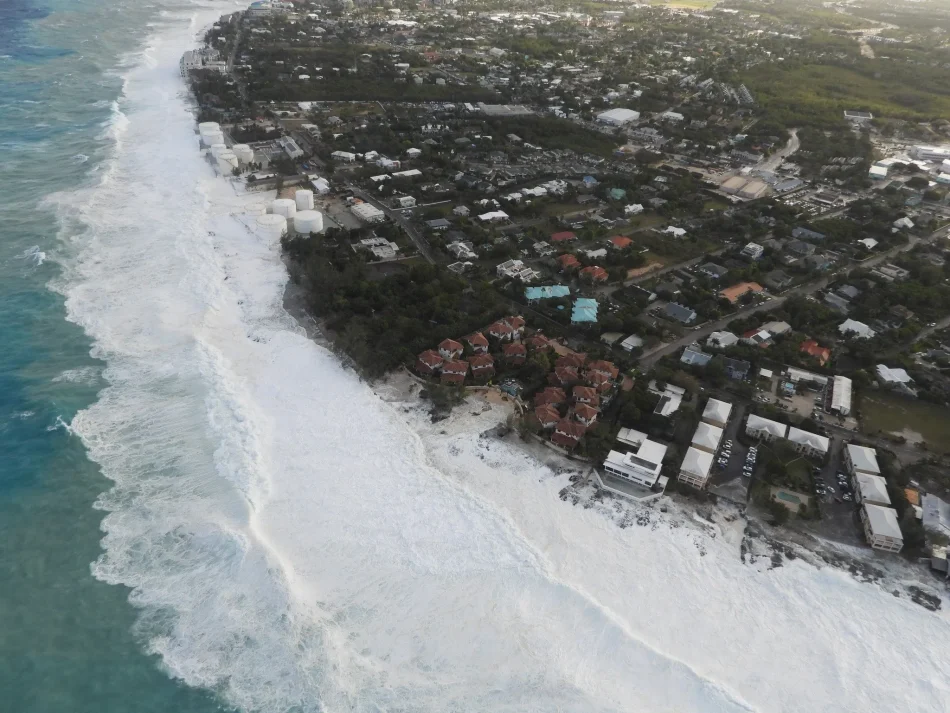Setbacks for Sustainability Statement & Interactive Map

High energy waves and storm surge inundates the South Sound area of Grand Cayman on 6 February, 2024
VIEW the interactive coastal setback map
On February 6th 2024, the Cayman Islands experienced a Nor’wester with high seas and near gale force winds. Unfortunately many coastal properties, across the islands suffered damage as a result, with environmental, financial and personal consequences.
Like many in our community, during and after the storm we received several photos and videos through social media depicting devastating damage to property, accompanied by questions about the vulnerability of building on the coast. This prompted us to review the technical assessments provided by the Department of Environment (DoE) for a number of those developments along the western shore of Grand Cayman, which experienced particularly severe impacts from high energy wave action and storm surge.
The DoE is regularly consulted on development projects under delegated authority of the National Conservation Council (NCC) as outlined under section 41 of the National Conservation Act (NCA), which mandates government entities to consult with the Council on any decisions which may have an adverse effecton the environment. Our team of environmental and sustainability experts provide written technical assessments on a project basis to the originating entity, though the vast majority of these assessments are not legally binding, and are recommendations only.
To organize this information we created a map which presents DoE/NCC’s original technical review and how the review was incorporated into decisions related to coastal development, along with the publicly circulated video clips showing what was experienced at those locations on February 6th.
The results show how critically important it is to not generalise coastal setbacks but instead to take account of all factors which contribute to the vulnerability of a particular location to wave action and coastal inundation. At a minimum the following factors should be considered: coastal type, elevation, location in relation to windward or leeward sides of the island, the presence or absence of a shallow coastal lagoon fronted by a protective fringing reef and the presence of deep water close to shore.
Until such time as our Planning Regulations are amended to include a coastal setback map which is based on consideration of these factors, it is our sincere hope that the Ministry of Sustainability and Climate Resiliency’s proposal for a fixed coastal setback reference line along Seven mile Beach based on long-term scientific data be considered for immediate implementation to help guide future developments, and that a consistent policy be applied by the planning officials of all proposed coastal development having to at least meet the currently specified minimum setbacks.





